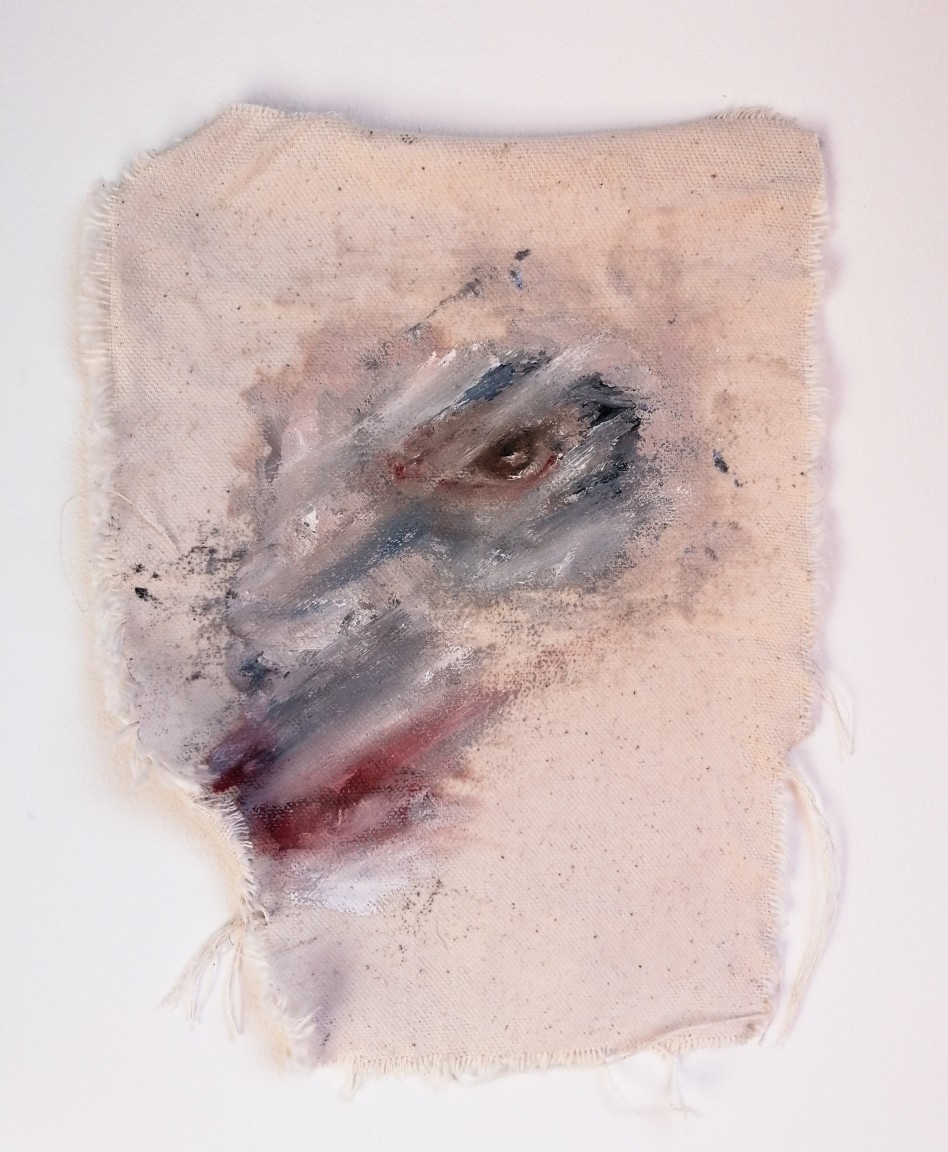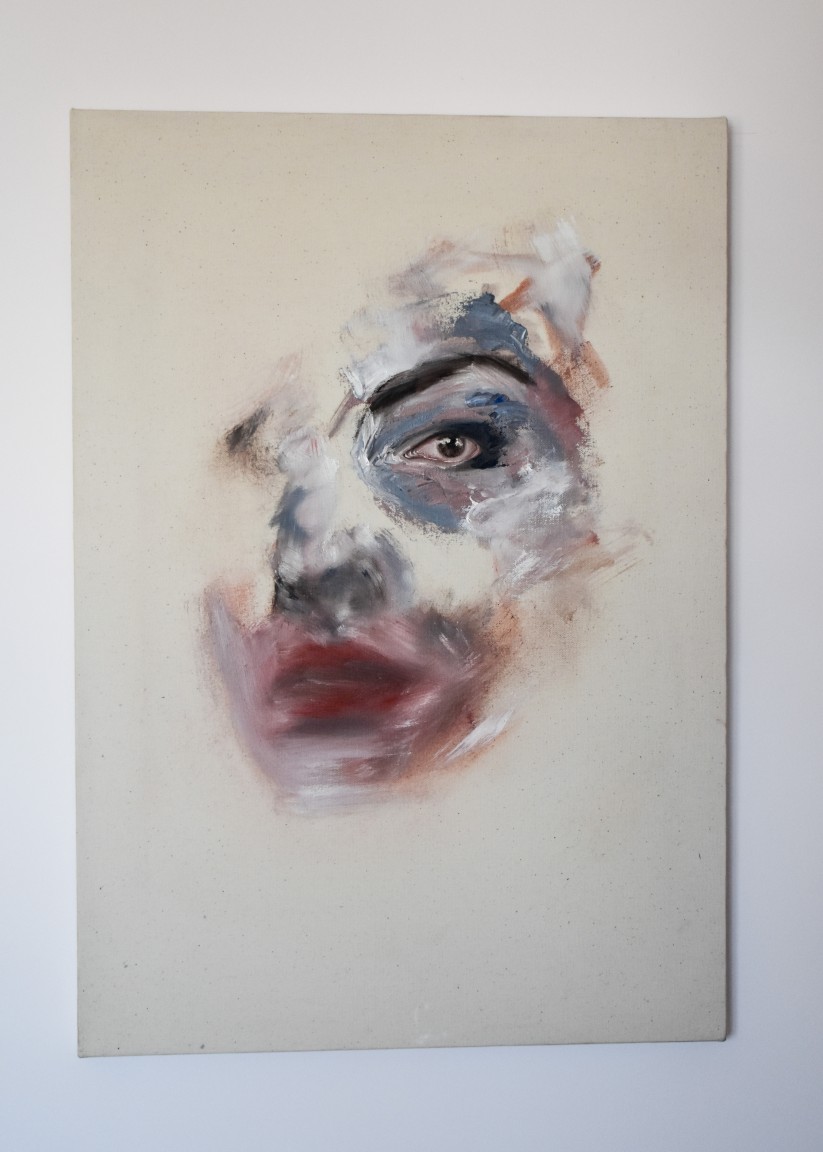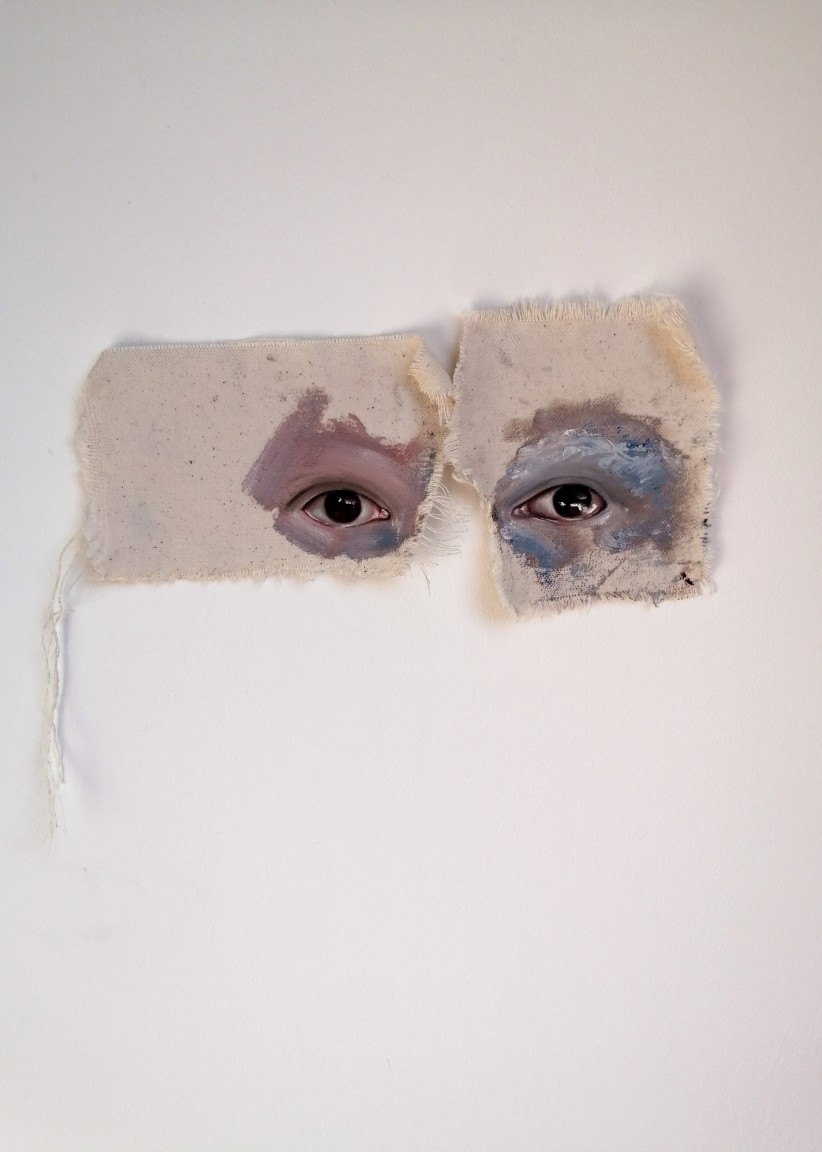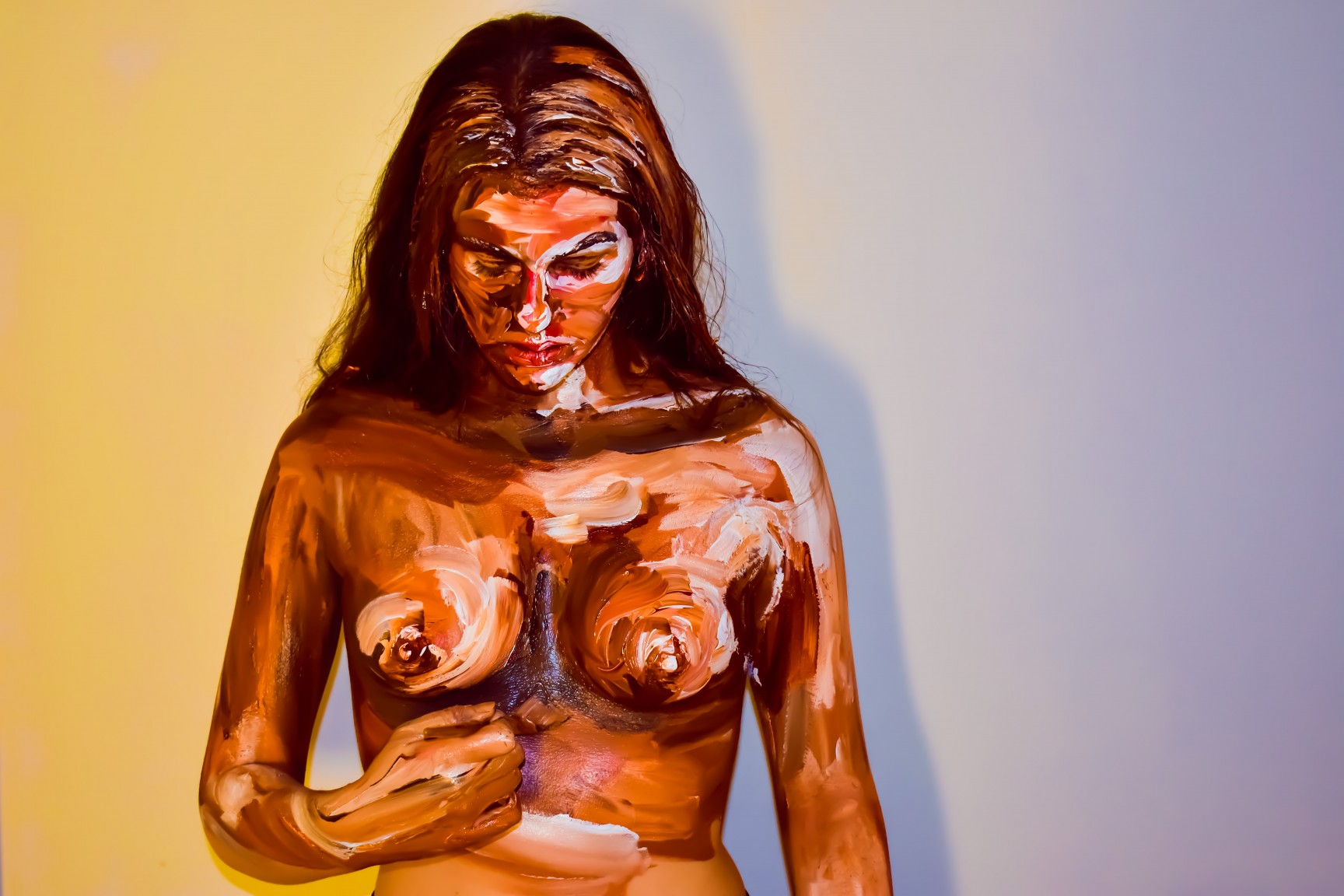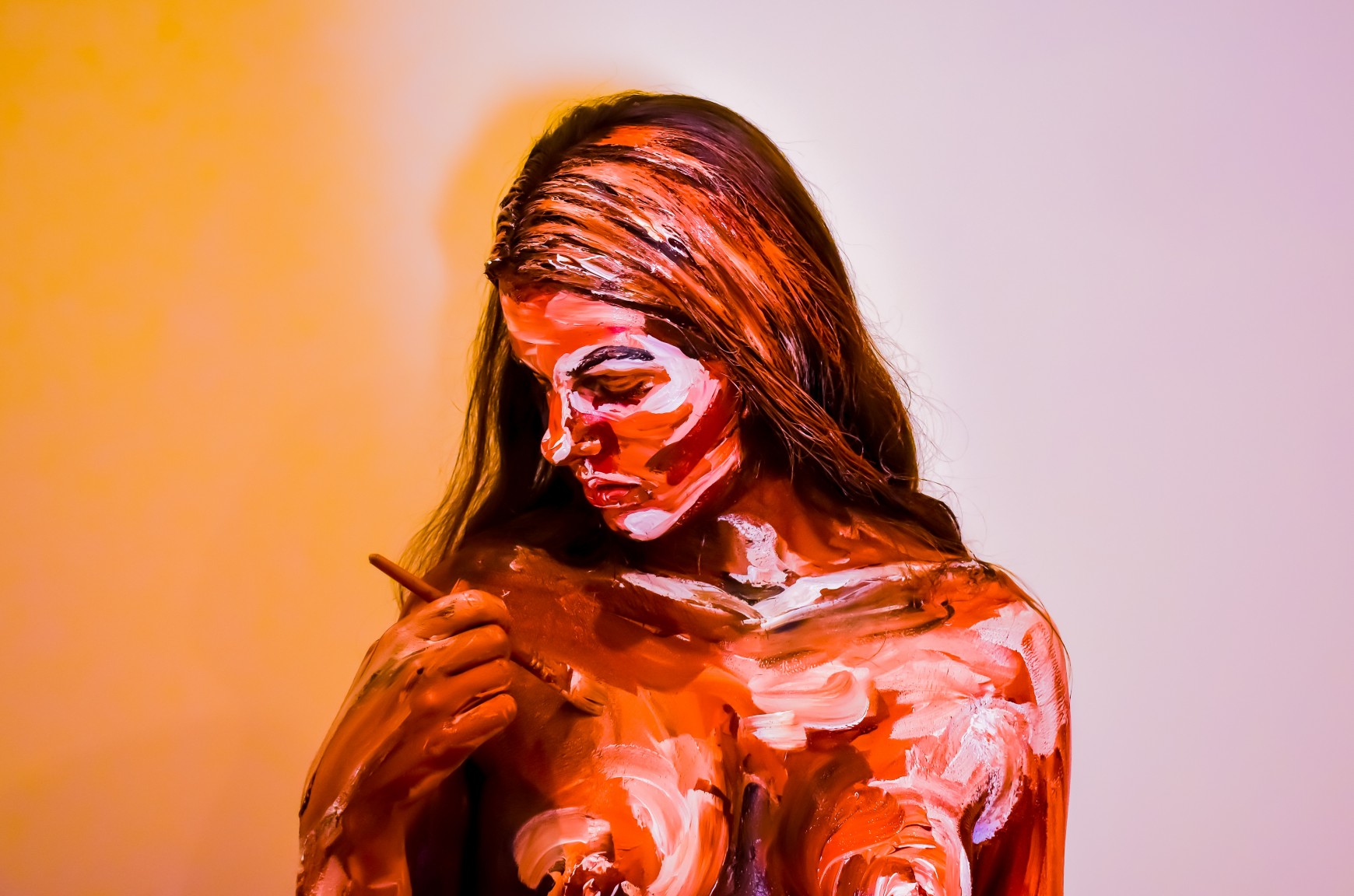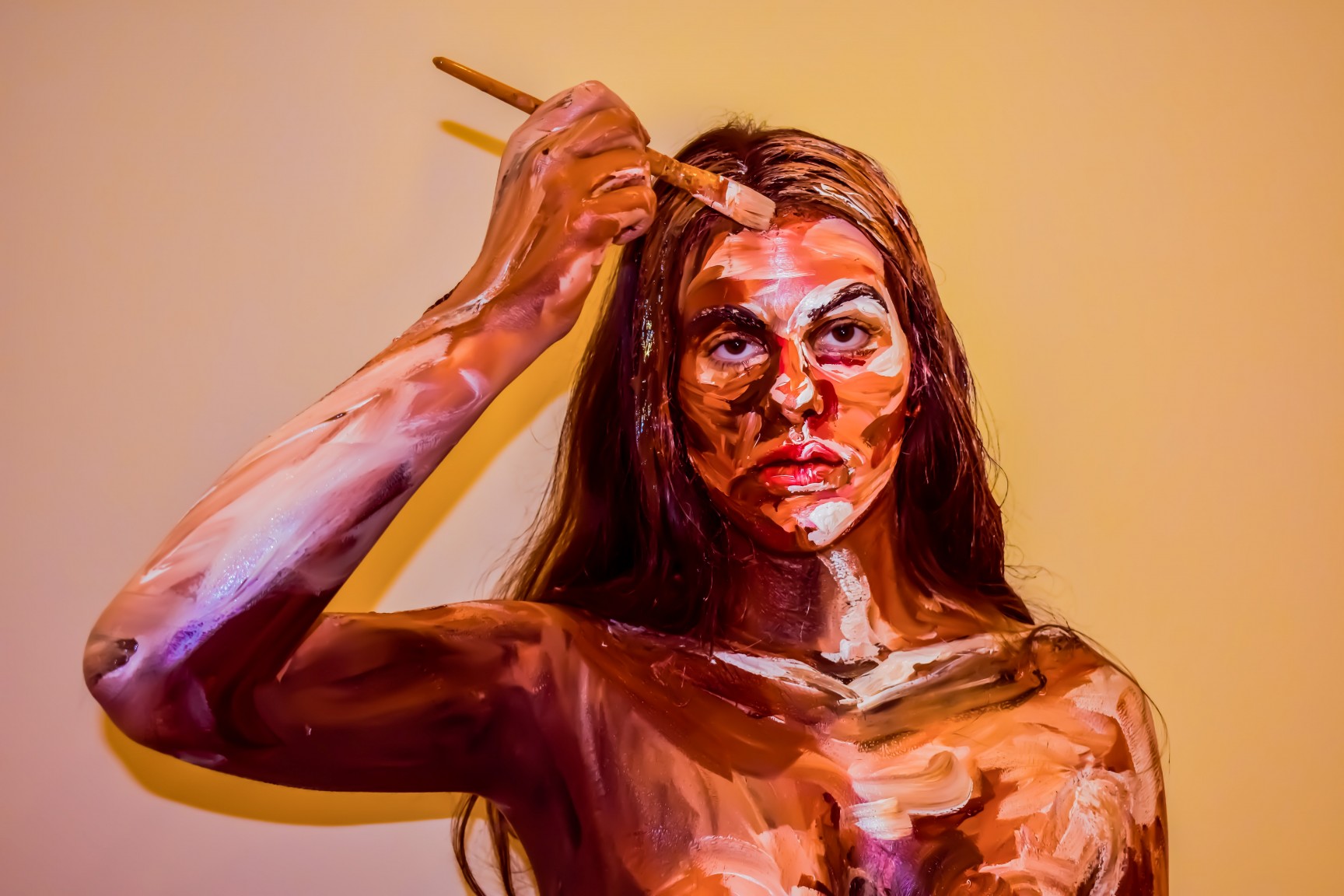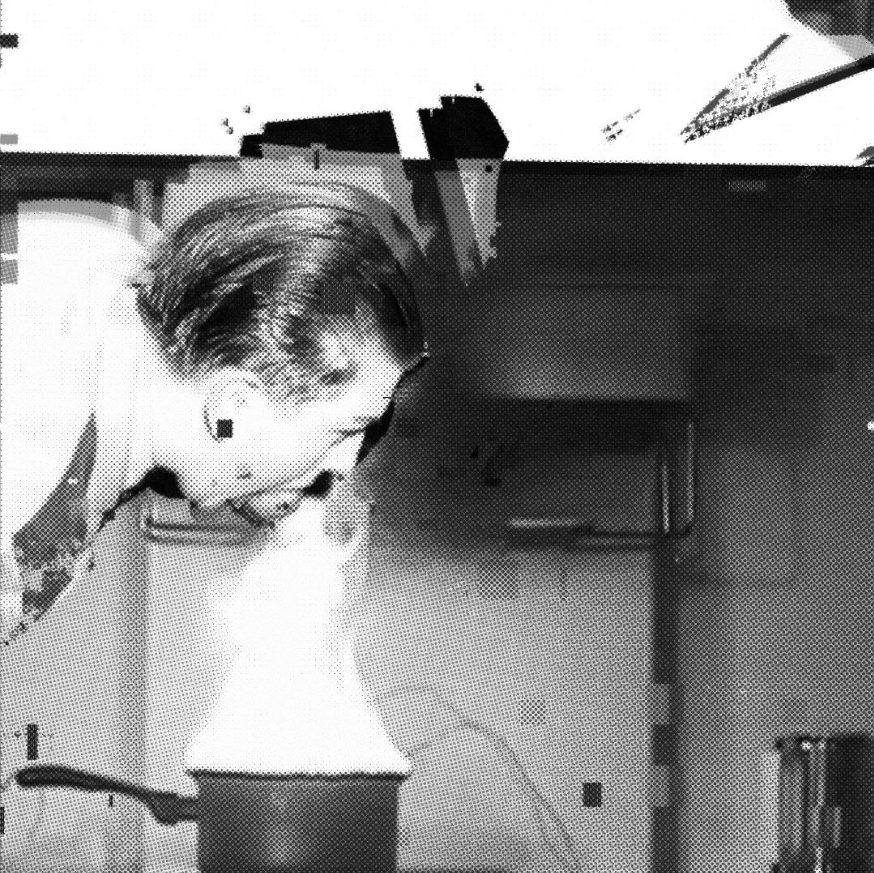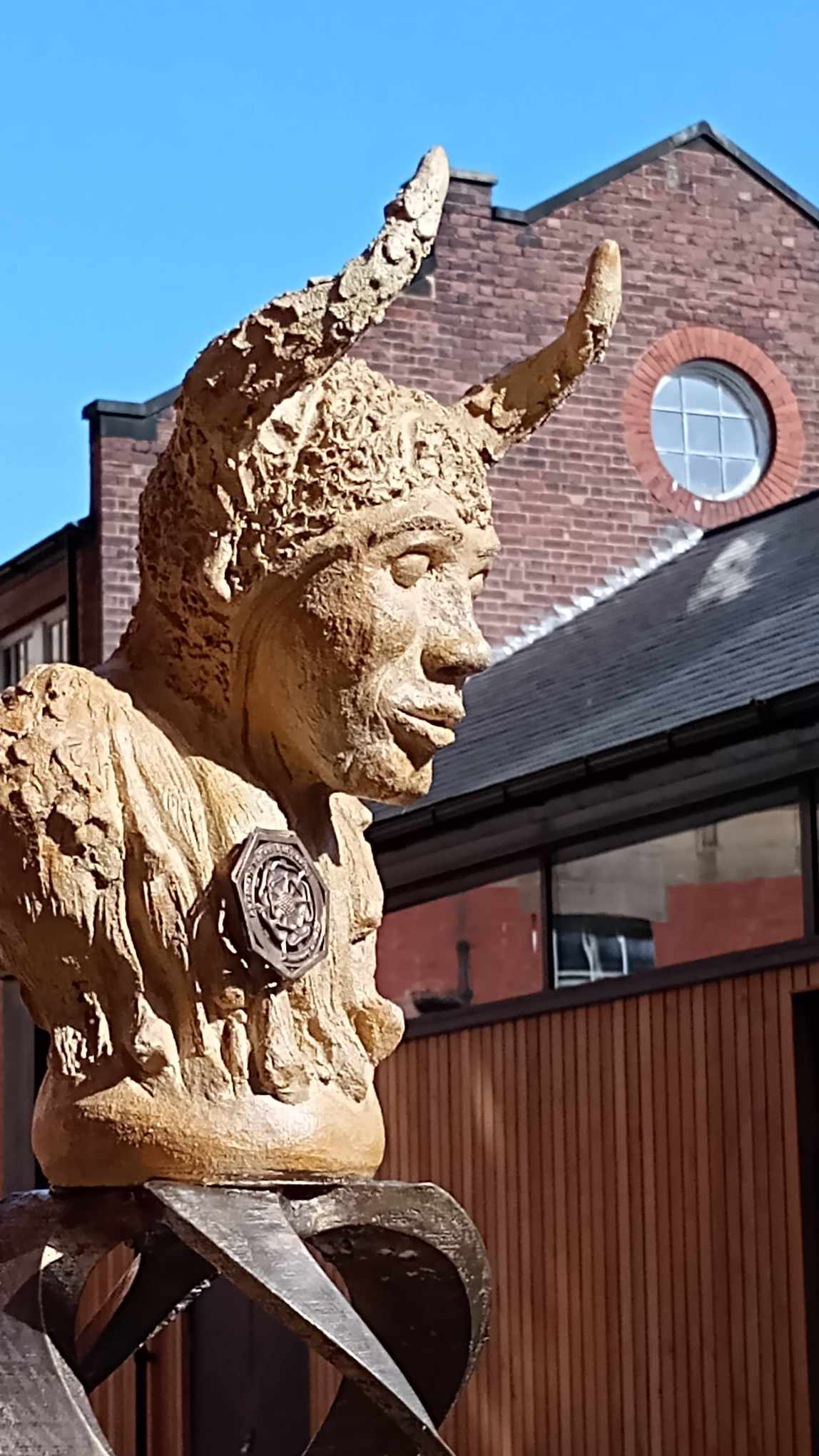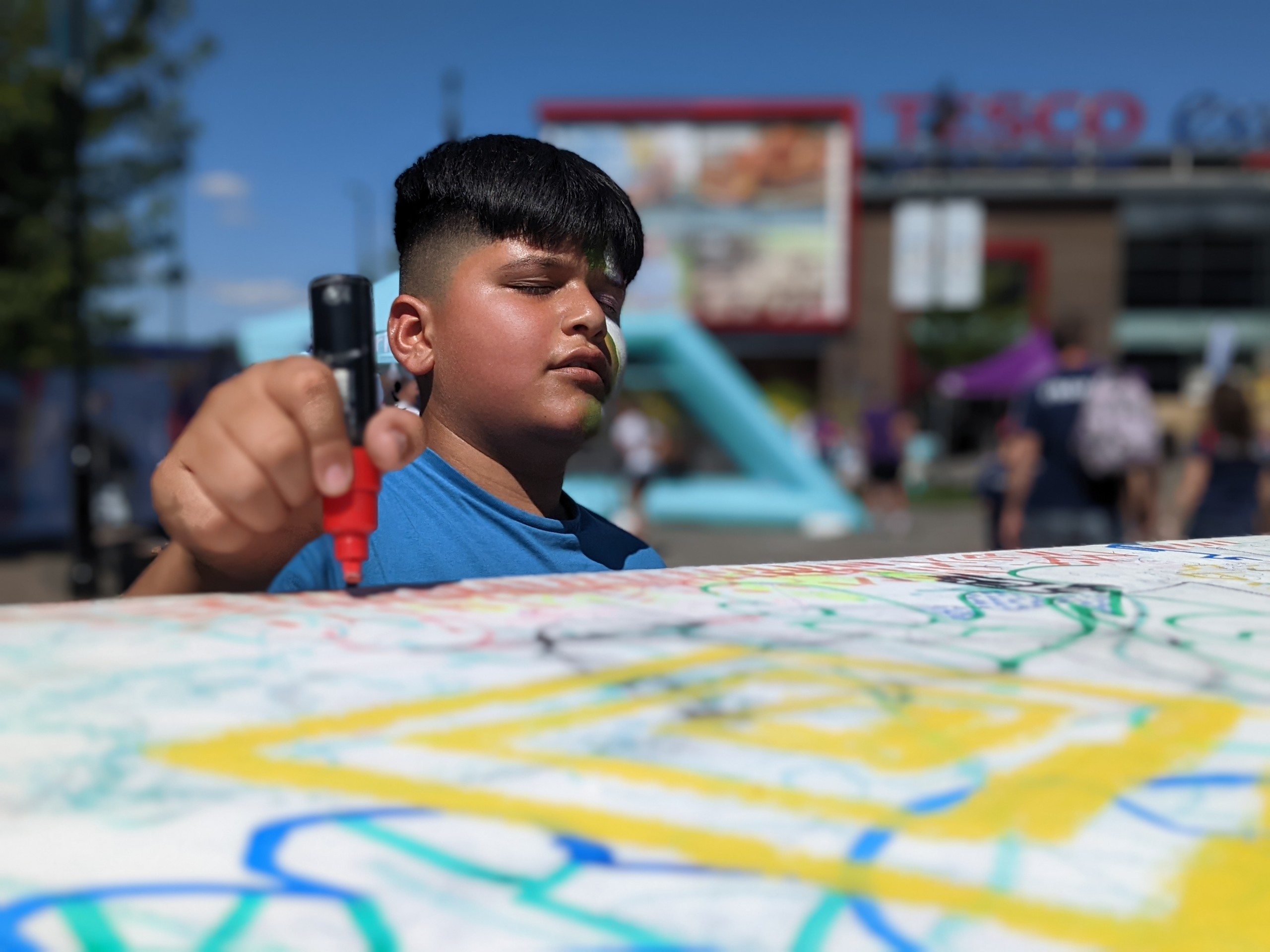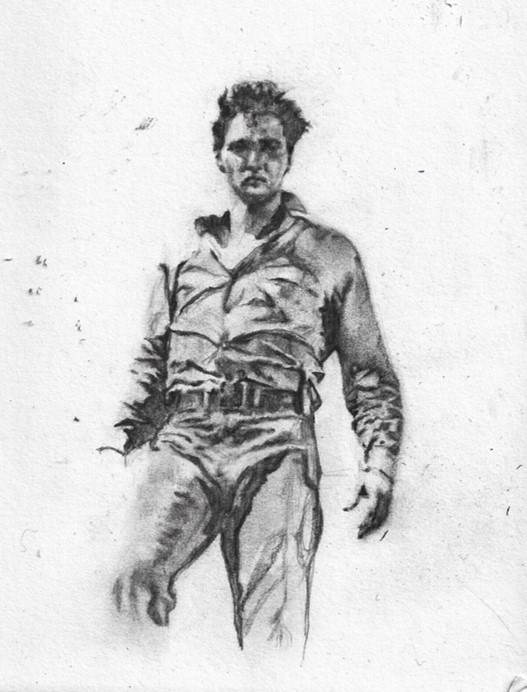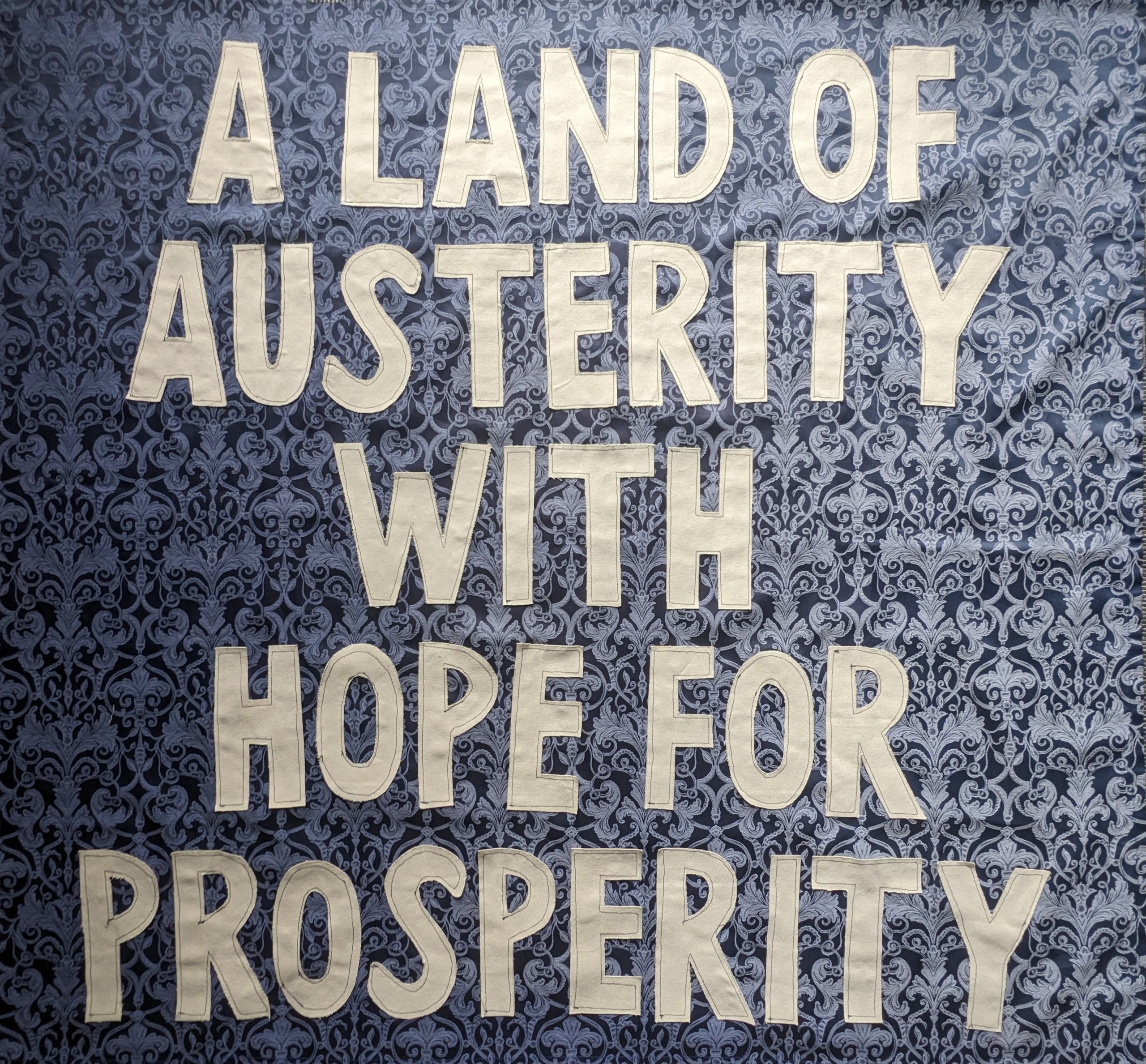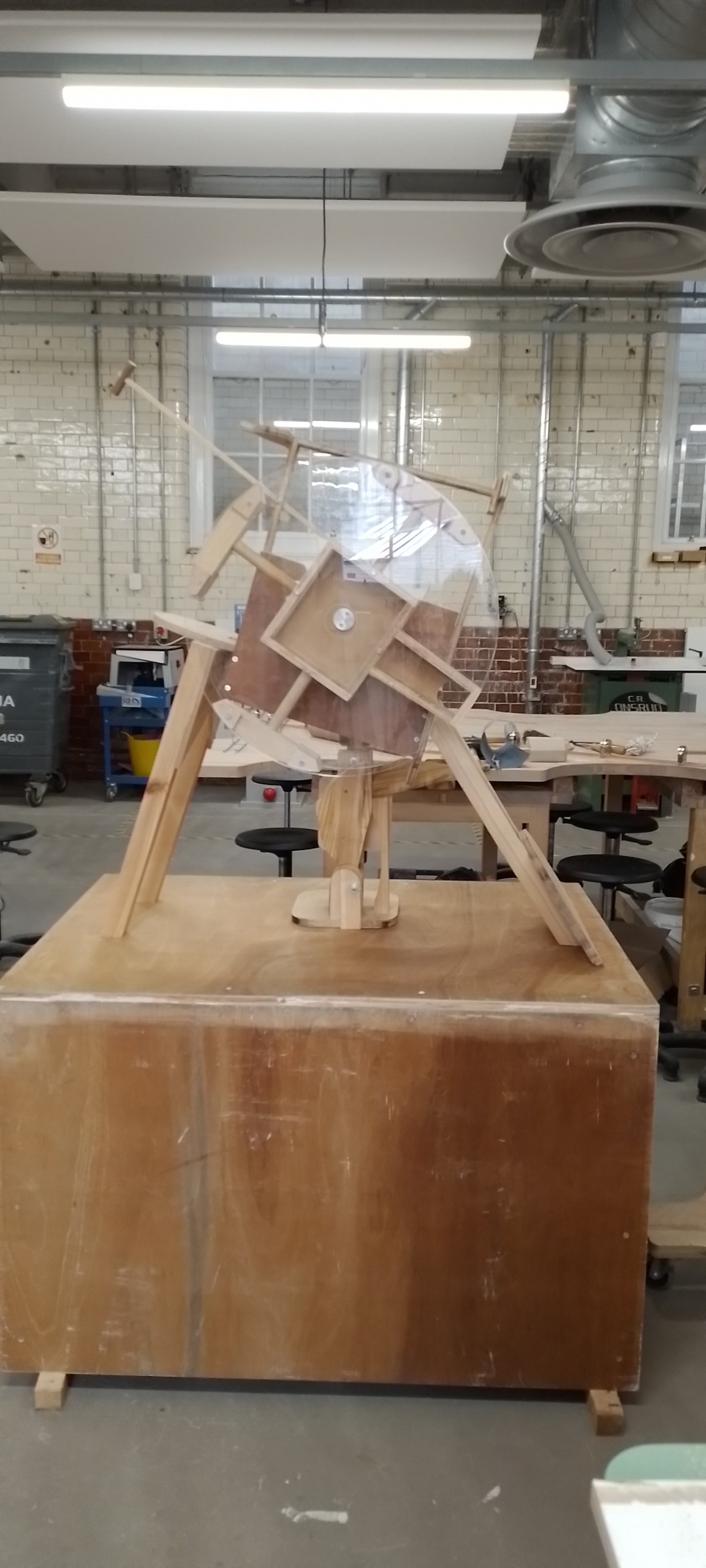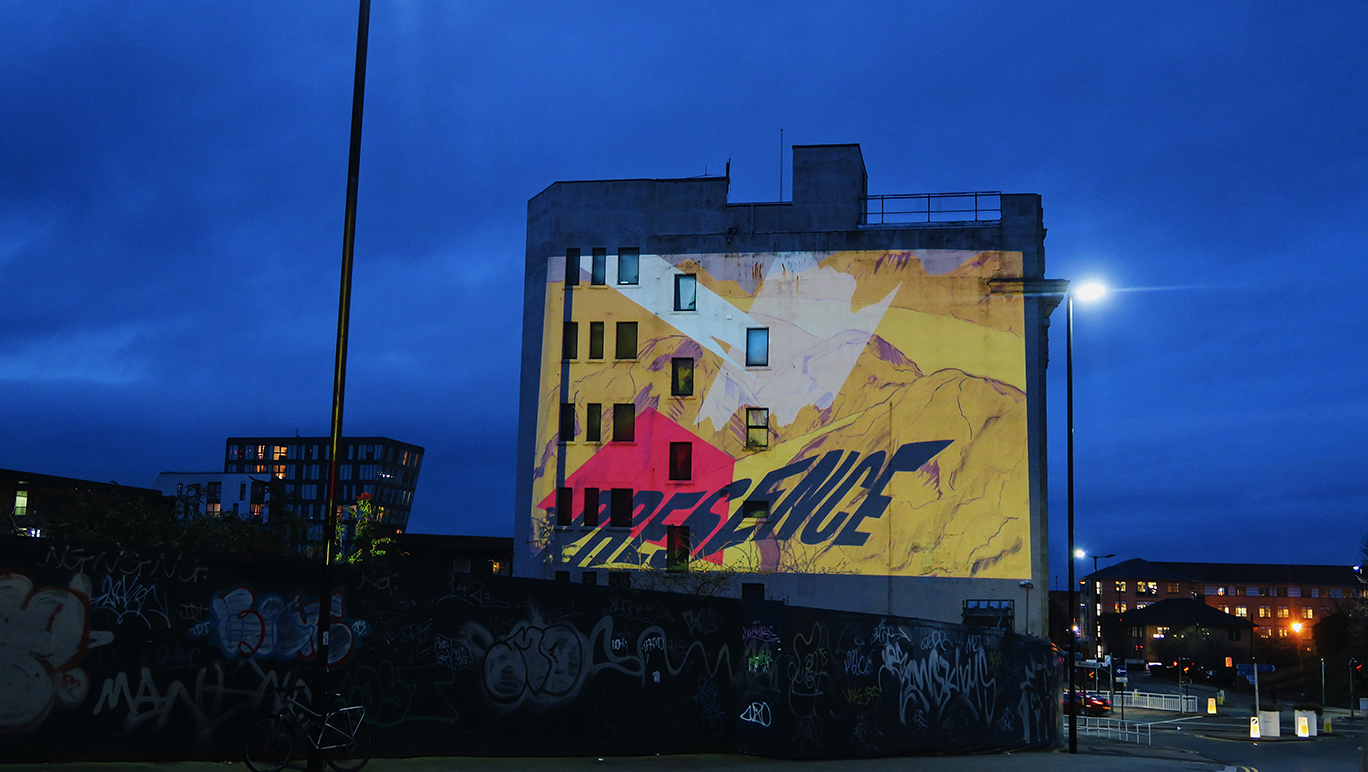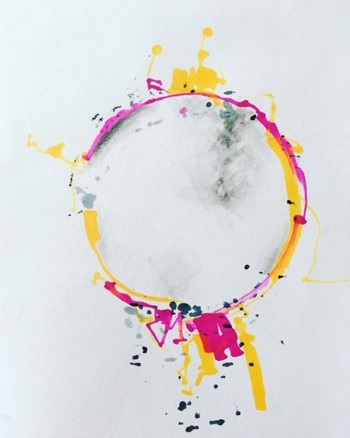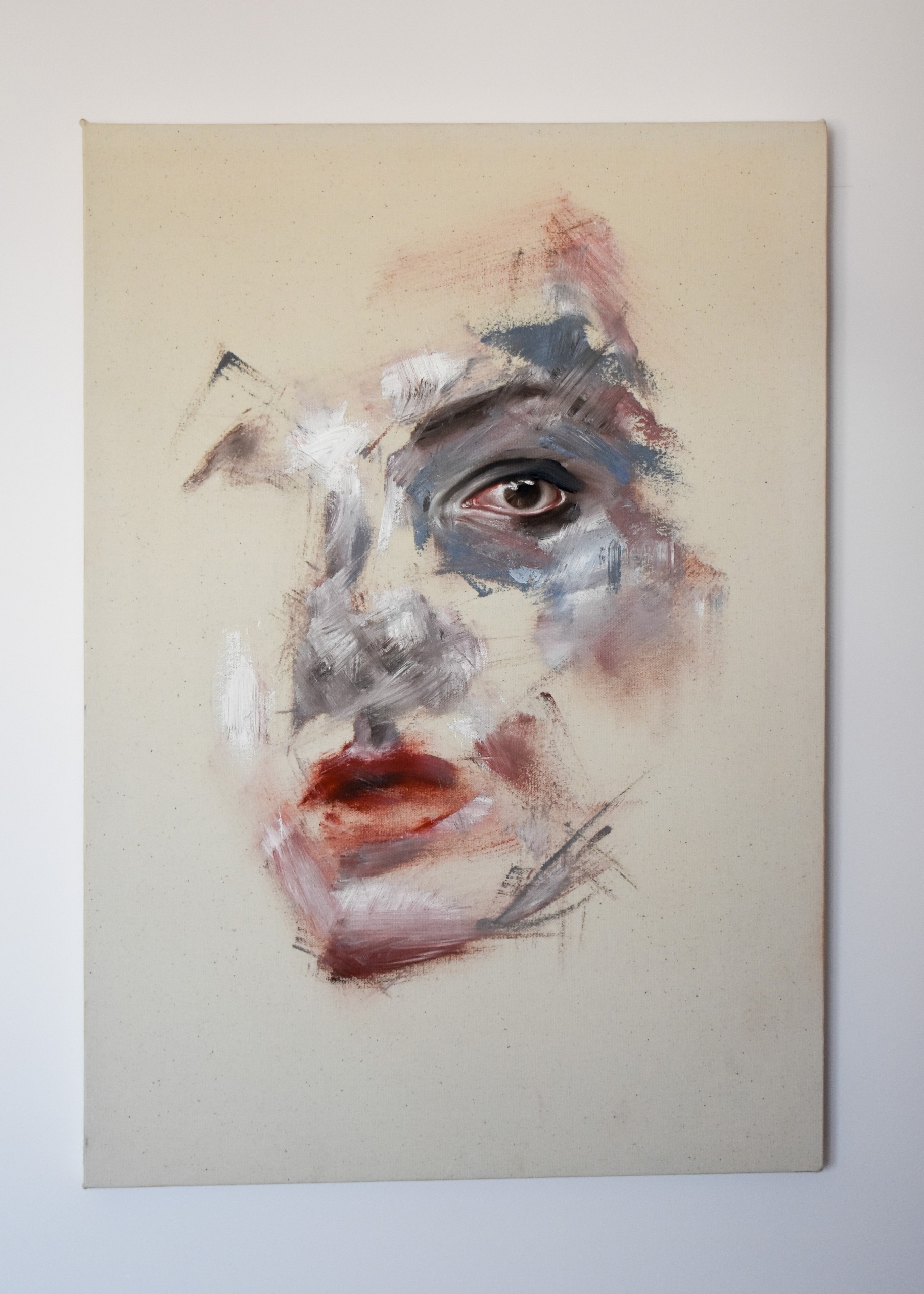
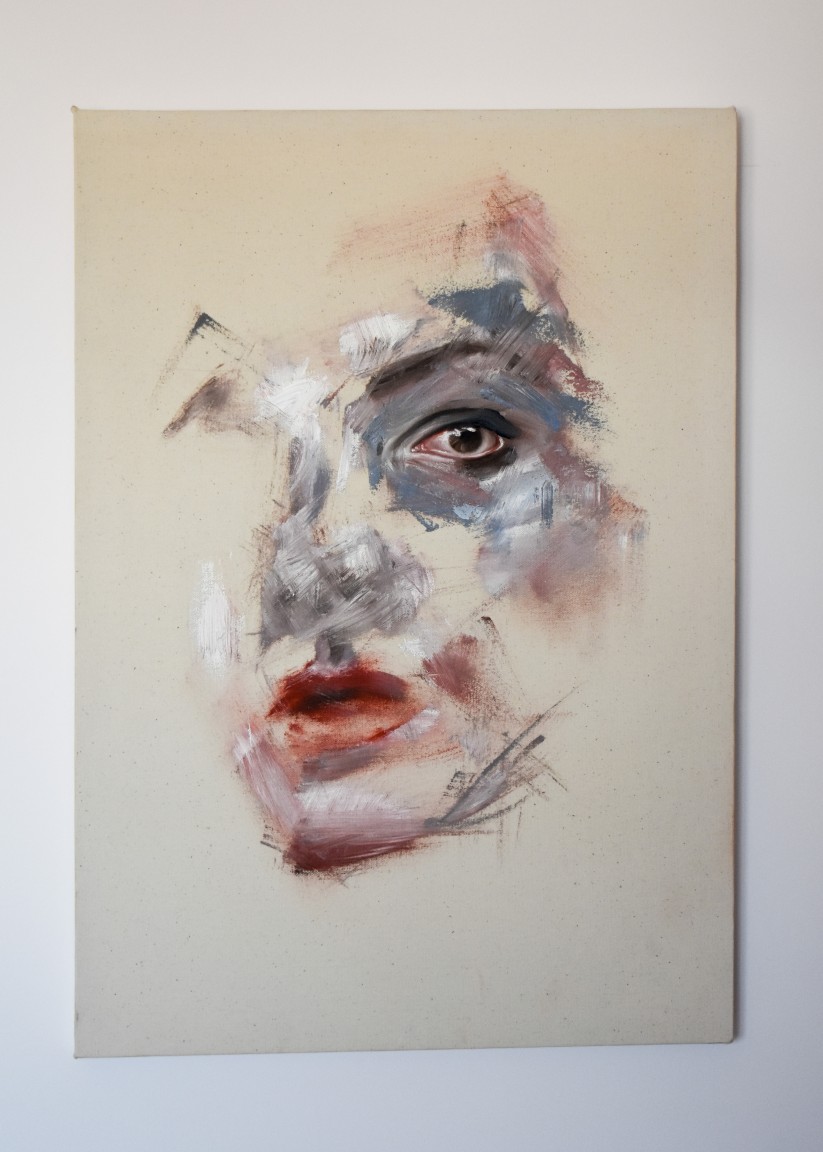
Delving into existential concepts of identity and self-perception, Hannah Ravandi contemplates the term ‘self-portrait’. Using Jacques Lacan’s mirror stage theory as a foundation she translates theoretical discussions of the ‘self’ into brushstrokes and paint. Dabbling occasionally in body paint, she primarily works with oil paint on canvas or wood, a gesture to self-portraiture’s long history.
“I use a delicate, soft colour palate, keeping the brush marks deliberate and minimal. I embellish the portrait with a palate knife around the eye to add thick texture, intending to draw the viewers’ gaze to the detailed eye of the portrait, and therefore frame the gaze of the painting. I begin developing this by blurring the lower part of the face, while still utilising a palate knife on the upper section, adding texture to highlight the realism of the eye. Then, using jagged, deliberate brush marks, I create a frantic sense to the painting in representation of the attempt to find self-knowledge through the form of the self-portrait, and its constant resistance in conveying an accurate depiction of oneself. The explosive quality to the portrait gestures to a disillusionment with the self which one portrays to the world around us, and the true self free from societal and cultural influence. The detailed eye penetrates the viewer’s gaze, intending to lure and trap the viewer in a web of self-contemplation. The splintered effect highlights the fractured notion of the ‘true’ self…”
As Lacan philosophises, before the mirror stage the self is made up of sensory and impulsive experiences, completely in harmony with the rest of the world and with no preconception of how it correlates with the world around it. At the mirror stage, this stops, the self is suddenly perceived as an object, and the person’s experience of the world is permanently altered. Ravandi’s painting Ego represents the capturing of this moment in a medusa-like fashion. Reflection is seen by the self, the self becomes an object, sensory impulses freeze, and the statuesque self becomes something viewed by those around it. It is the split-second in which this moment occurs, where the chaotic and undepictable self disappears and the objective self formulates.
The eye is an imperative feature of Ravandi’s self-portraits, inviting the viewer to scrutinise their own self-perception. The intimacy provided of the direct gaze becomes a parody of the intimate experience of peering into a mirror for perhaps a little too long, until one feels detached from their own reflection; the familiar becoming ‘other’.
“I dissect the ‘self’ and its resistance to visual interpretation until I am conscious of its fluidity and oscillation which ultimately renders the notion of a true self-portrait absurd. Yet like so many before me, this absurdity does not dissuade my artistic investigation of the self, but fuels it.”
Ravandi considers the ongoing body of work as a single piece of art. The many repeated representations indicate the granularity of the self, and ultimately the preposterous notion of a true self-portrait.
Bristol-based Ravandi studied BA English Literature and Theatre in Sheffield five years ago where she took every opportunity to incorporate her artwork into set design and scenic painting. Her MA Fine Art, has left her confident in her own art practice and “itching to start my career in the arts, be it as a fine artist or a scenic”.
